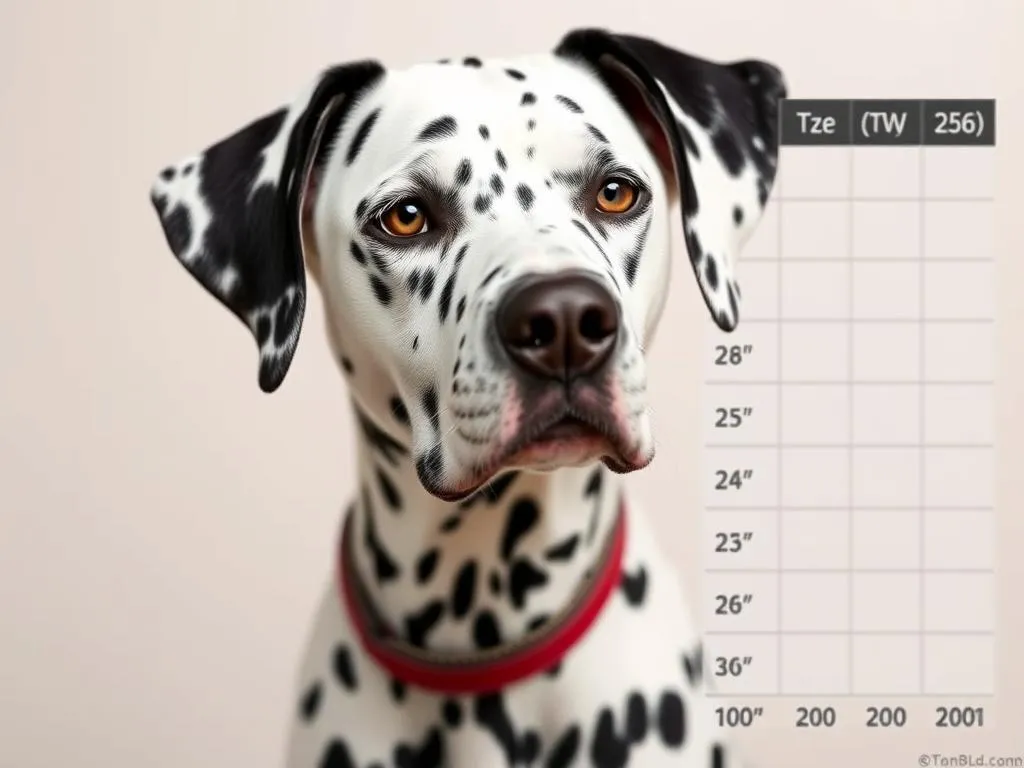
Introduction
Dalmatians are one of the most recognizable dog breeds, known for their unique spotted coat and energetic personality. Originating from Croatia, they have evolved from carriage dogs to beloved companions in modern households. For potential owners, understanding the Dalmatian size weight growth chart is crucial. Knowing how large your Dalmatian will grow and how much they should weigh at different stages can help ensure their health and well-being. This article delves into the growth patterns of Dalmatians, providing a comprehensive growth chart and essential insights into their size and weight.
Understanding the Dalmatian Breed
History of Dalmatians
The Dalmatian breed has a rich history, with roots tracing back to ancient times. They were named after the Dalmatia region in Croatia, where they served various roles, from guarding horses to acting as firehouse mascots. In the 18th century, they became popular as carriage dogs, running alongside horse-drawn carriages, providing protection and companionship. Their historical significance has cemented their place in both culture and society.
Characteristics of Dalmatians
Dalmatians are easily identifiable by their short, dense coat adorned with black or liver spots. They typically stand between 19 to 24 inches tall at the shoulder. Their temperament is as striking as their appearance; they are energetic, intelligent, and often described as playful and friendly. However, they require consistent training and socialization from an early age to channel their energy positively.
Importance of Size and Weight Tracking
Health Implications
Tracking the size and weight of your Dalmatian is vital for their health. Maintaining an appropriate weight helps prevent common health issues, including hip dysplasia, urinary stones, and skin conditions. Understanding the Dalmatian size weight growth chart allows you to recognize whether your dog is growing at a healthy rate.
Growth Variations
Various factors influence individual growth patterns, including genetics, nutrition, and environment. It’s essential to understand what constitutes normal growth versus abnormal. If your Dalmatian is significantly underweight or overweight for their age, it may indicate underlying health issues or improper care.
Dalmatian Size and Weight Growth Chart
Growth Stages of Dalmatians
Dalmatians go through several growth stages, each with specific physical and nutritional needs:
- Puppy Stage (0-12 months): Rapid growth occurs during this period, and puppies typically double their weight by the time they are six months old.
- Adolescent Stage (1-2 years): Growth slows, but Dalmatians continue to fill out and develop muscle during this stage.
- Adult Stage (2 years and older): Dalmatians reach their full size, and maintaining a healthy weight becomes crucial.
Size and Weight Data
Here’s a quick look at the typical size and weight range for male and female Dalmatians during their growth stages:
| Age (Months) | Male Weight (lbs) | Female Weight (lbs) | Male Height (inches) | Female Height (inches) |
|---|---|---|---|---|
| 0-3 | 8-15 | 8-15 | 10-12 | 10-12 |
| 3-6 | 15-30 | 15-25 | 12-16 | 12-15 |
| 6-12 | 30-55 | 25-50 | 16-20 | 15-19 |
| 1-2 | 55-70 | 50-65 | 19-24 | 18-23 |
Average Measurements
- Height: Males typically stand between 19 to 24 inches, while females range from 18 to 23 inches at the shoulder.
- Weight: Adult males usually weigh between 55 to 70 pounds, and females between 50 to 65 pounds.
Factors Influencing Growth
Genetics
Genetics play a significant role in determining the size and weight of a Dalmatian. The lineage and breeding practices can influence growth patterns. Responsible breeders take care to produce healthy puppies with desirable traits, which can help ensure proper growth and development.
Nutrition
Proper nutrition is essential during the growth stages of a Dalmatian. A balanced diet rich in high-quality protein, fats, and essential nutrients supports healthy growth. Puppies require specially formulated puppy food to support their rapid growth, while adult Dalmatians should transition to a maintenance diet to prevent obesity.
Exercise Requirements
Dalmatians are an active breed, and regular exercise is crucial for their physical and mental health. Exercise impacts growth and weight; it helps build muscle and maintain a healthy weight. Puppies should engage in short, controlled play sessions, while adults require daily walks and playtime to expend their energy.
Monitoring Your Dalmatian’s Growth
Regular Check-Ups
Regular vet visits are essential for monitoring your Dalmatian’s growth. Vets can provide valuable insights into your dog’s development, assess body condition, and recommend adjustments to diet and exercise if needed. Discuss any concerns about your Dalmatian’s growth with your veterinarian.
At-Home Tracking Methods
You can track your Dalmatian’s growth at home by measuring their height and weight regularly. Use a tape measure to measure their height at the shoulder and a scale to weigh them. Keeping a written record can help you visualize their growth over time, allowing you to compare it against the Dalmatian size weight growth chart.
Common Growth Concerns
Underweight Dalmatians
If your Dalmatian appears underweight, it’s essential to identify the signs and address any potential health risks. Signs of underweight can include prominent ribs, a pronounced waist, and lethargy. Consult your vet for advice on a suitable diet and feeding schedule to help your dog gain weight safely.
Overweight Dalmatians
Obesity is a growing concern for many dog breeds, including Dalmatians. Risks associated with obesity can include joint problems, heart disease, and diabetes. If your Dalmatian is overweight, consult your veterinarian to create a weight management plan. Strategies may include adjusting their diet, increasing exercise, and monitoring their progress regularly.
Conclusion
Understanding the Dalmatian size weight growth chart is crucial for ensuring your dog remains healthy and happy throughout their life. By monitoring their growth, maintaining a balanced diet, and providing plenty of exercise, you can support their development from puppyhood into adulthood. Responsible ownership includes being aware of your Dalmatian’s size and weight, helping you catch any potential health concerns early and ensuring a long, fulfilling life for your furry friend.
FAQs
What is the average lifespan of a Dalmatian?
The average lifespan of a Dalmatian is typically between 10 to 13 years, though with proper care, some can live longer.
How can I tell if my Dalmatian is growing normally?
Regular monitoring of your Dalmatian’s height and weight against the Dalmatian size weight growth chart can help you determine if they are growing at a healthy rate. Consulting your veterinarian for regular check-ups is also essential.
What should I feed my Dalmatian during growth stages?
During their puppy stage, provide high-quality puppy food designed for large breeds. As they transition to adulthood, switch to a balanced adult dog food that meets their nutritional needs.
Are there any specific health issues that Dalmatians are prone to?
Dalmatians can be prone to certain health issues, including hip dysplasia, urinary stones, and skin allergies. Regular vet check-ups and maintaining a healthy weight can mitigate some of these risks.









